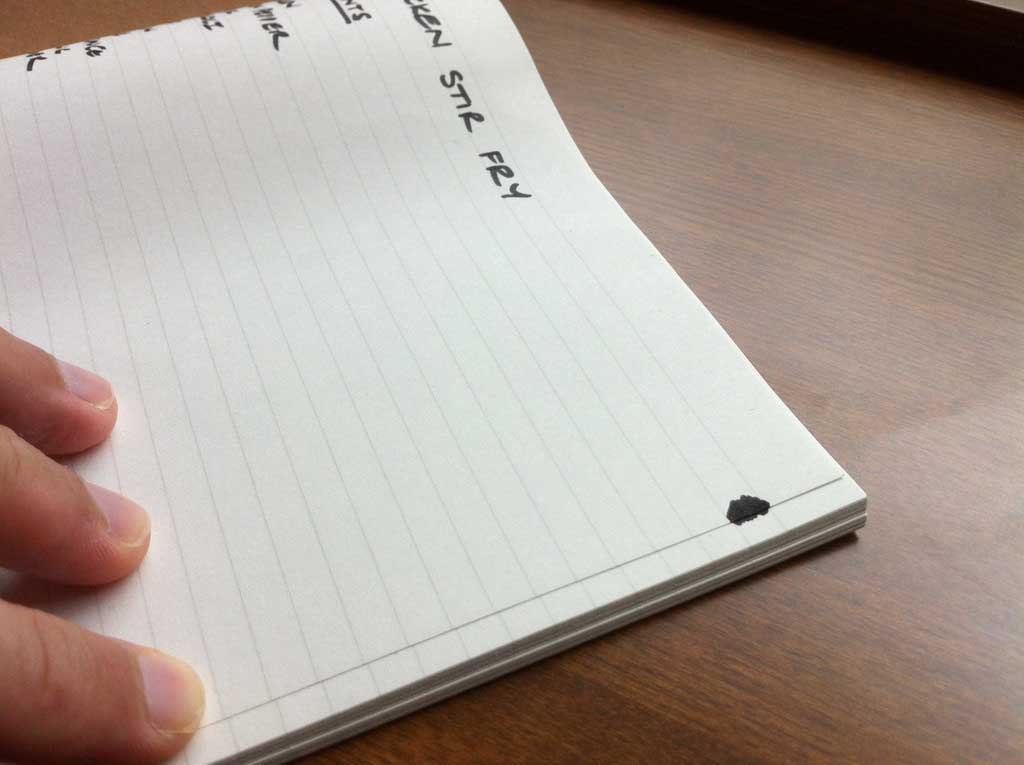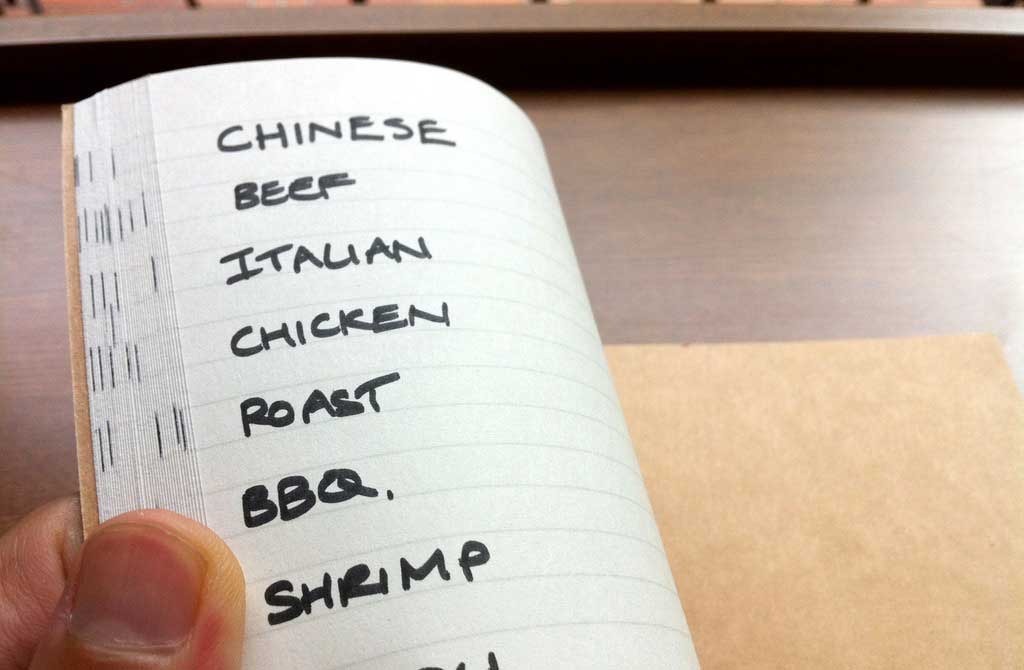A little Japanese trick to organizing your notebook
- Transfer
- Tutorial
Tools like Evernote make finding and organizing information really easy. However, at times I find notebooks more convenient, especially on the go.
At the same time, paper records are more difficult to organize. Most likely, many people divide all the pages into separate thematic parts, in which they write notes corresponding to the topics. Some just write everything in a row, forcing themselves to search for the necessary more and more difficult each time.
If this is familiar to you, then you will probably love this trick that I learned in Japan. It may look a bit messy, and I don't use it every time, but at times this kind of navigation can be very useful. Let's start our lesson right under the cut!
The last page of your book will serve us something like a list of tags or a table of contents. Each time you create the desired mark, it needs to “add a tag” at the end.
For example, suppose you have a notebook with recipes, and you just wrote a new Chinese dish on the first page.

After that, go to the last page and create the tag 'China' by writing it at the top in the very left part of the page.

Now back to the page of our recipe and put a small mark strictly on the stock in which we wrote the tag.

You made this mark so that it is visible even when the notebook is closed. After performing these actions repeatedly, several marks will be visible on the “slice”.

Now, when you want to find a Chinese dish, you need to find its tag on the last page and open the pages with a mark on the tag line. It's as simple as clicking on some link.
And, of course, you are not limited by the number of tags for a page and the number of pages for tags. You can create more than one mark. That is, to open a Chinese chicken dish, you can open both pages with the "China" tag and the "chicken" tag. Now the page can be searched even by several parameters.
I also assume that the mark data on a slice of a notebook can be represented as a graph.
For example, you can control your feelings during the course of the course, marking your thoughts daily (for example, satisfaction, clarity and degree of fatigue after class). After a few weeks, you can take a look at the resulting graph and see how well you feel.
You can also use this to track progress in achieving your goals. If you want to lose weight with a four-hour program, then you can record certain events during the course of the exercise, for example: 'I went on a diet', 'I went to the gym', 'I didn’t drink alcohol', etc. The more tags you see, the more you will be satisfied with the result. With this approach, you can understand what is missing and where you can put more effort.
I record various JavaScript statements and add various tags to them (usually more than one). After that, you can look in the table of contents and find all the operators that are suitable for solving the problem (to find them, the most suitable tag for solving the problem is selected).
PS: Thanks to ilusha_sergeevich for the idea of translating the article, as well as zvorygin and dimitrimus for additional creative ideas in the comments.
At the same time, paper records are more difficult to organize. Most likely, many people divide all the pages into separate thematic parts, in which they write notes corresponding to the topics. Some just write everything in a row, forcing themselves to search for the necessary more and more difficult each time.
If this is familiar to you, then you will probably love this trick that I learned in Japan. It may look a bit messy, and I don't use it every time, but at times this kind of navigation can be very useful. Let's start our lesson right under the cut!
How it works?
The last page of your book will serve us something like a list of tags or a table of contents. Each time you create the desired mark, it needs to “add a tag” at the end.
For example, suppose you have a notebook with recipes, and you just wrote a new Chinese dish on the first page.

After that, go to the last page and create the tag 'China' by writing it at the top in the very left part of the page.

Now back to the page of our recipe and put a small mark strictly on the stock in which we wrote the tag.

You made this mark so that it is visible even when the notebook is closed. After performing these actions repeatedly, several marks will be visible on the “slice”.

Now, when you want to find a Chinese dish, you need to find its tag on the last page and open the pages with a mark on the tag line. It's as simple as clicking on some link.
And, of course, you are not limited by the number of tags for a page and the number of pages for tags. You can create more than one mark. That is, to open a Chinese chicken dish, you can open both pages with the "China" tag and the "chicken" tag. Now the page can be searched even by several parameters.
Visual trends
I also assume that the mark data on a slice of a notebook can be represented as a graph.
For example, you can control your feelings during the course of the course, marking your thoughts daily (for example, satisfaction, clarity and degree of fatigue after class). After a few weeks, you can take a look at the resulting graph and see how well you feel.
You can also use this to track progress in achieving your goals. If you want to lose weight with a four-hour program, then you can record certain events during the course of the exercise, for example: 'I went on a diet', 'I went to the gym', 'I didn’t drink alcohol', etc. The more tags you see, the more you will be satisfied with the result. With this approach, you can understand what is missing and where you can put more effort.
How do i use this?
I record various JavaScript statements and add various tags to them (usually more than one). After that, you can look in the table of contents and find all the operators that are suitable for solving the problem (to find them, the most suitable tag for solving the problem is selected).
PS: Thanks to ilusha_sergeevich for the idea of translating the article, as well as zvorygin and dimitrimus for additional creative ideas in the comments.
